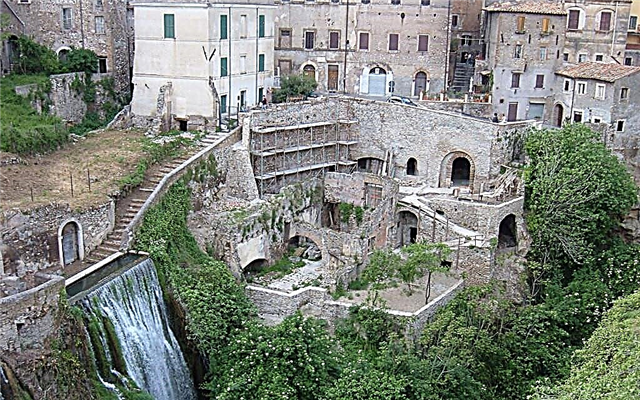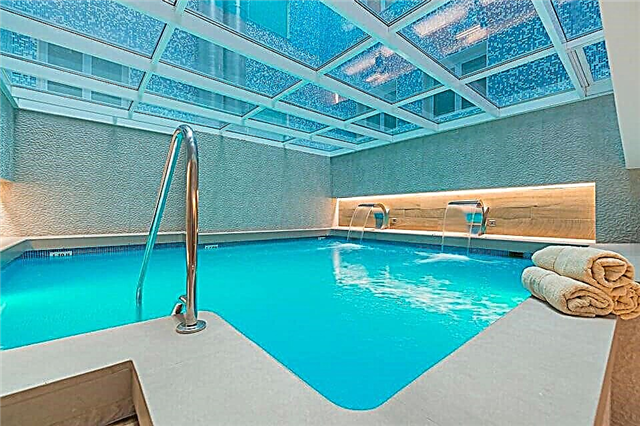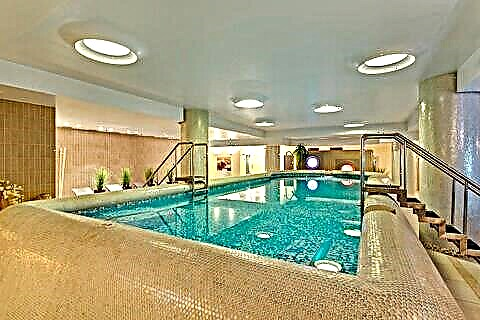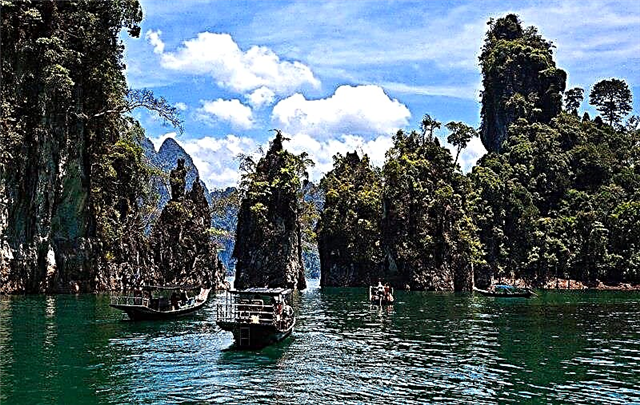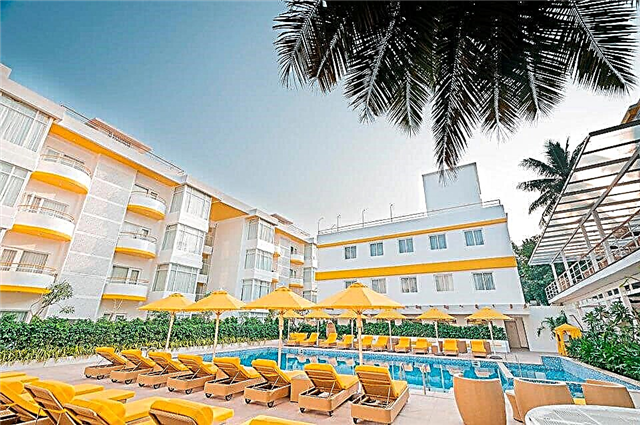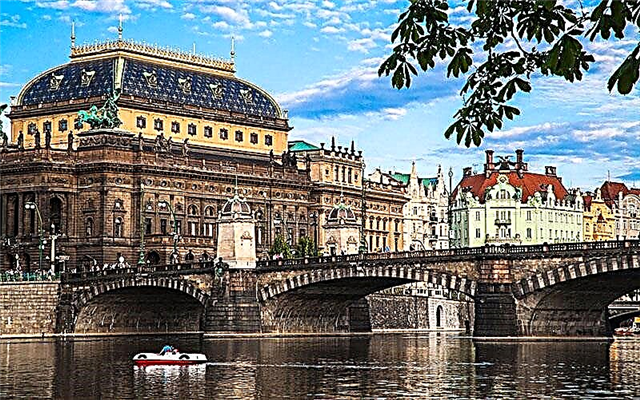Until 1784, Nove Mesto had the status of an independent city, founded in 1348 at the behest of Charles IV. It "grew" quickly, thanks to a rational layout, maximum interest of the king and generous funding. The territory of Nove Mesto was formed from 3 sections, connected by a series of streets. In order to independently explore as many attractions as possible located on the wide streets and squares of the beautiful “city within the city”, you can use the ready-made route that we have prepared for you.
National Museum (Národní muzeum)
The start of the self-guided tour is Wenceslas Square, the former Horse Market, where the green and red lines of the Prague metro lead. Leaving it at the Muzeum stop, you find yourself in close proximity to the National Museum - the largest museum in the Czech Republic. The magnificent monumental building, built in the neo-Renaissance style according to the project of the professor of the Czech Technical University Schulz, was erected for 5 years. Renowned sculptors and painters worked with inspiration to decorate the interior and exterior of the main symbol of Czech history, science, culture and art. An impressive equestrian monument has been erected in front of the building as a sign of worship to Saint Wenceslas.

The facade of the museum is decorated with marble plaques, on which the names of famous representatives of national science, art and politics are engraved. At the entrance there is a fountain with allegorical statues of the Vltava, Elbe and 3 Czech lands. The expositions and exhibitions of the museum reflect all stages of the country's development, the great achievements of its talented figures, hundreds of rarities and art objects.
Phoenix Palace (Palac Fenix)
Located on the other side of the street (Smechkah, 56) is an example of the era of constructivism in architecture. It is impossible not to notice the impressive size of the 7-storey building: it houses a shopping center, a cinema and other establishments.

Hotel Jalta

Built in 1957 by Tenzer, it attracts attention with its display windows, architectural and stucco decorations on the mezzanine and balcony railing, which create the unique beauty of the facade of the magnificent structure.
Lucerna Passage
The unique building (the first building made of reinforced concrete), embodying the features of antique pomp, was designed in the Art Deco style by Matej Blecht. The grandiose building on the left side of the square is a real masterpiece of architecture decorated with columns, numerous antique faces, busts, graceful stucco molding, and an original roof structure.
All this can be admired endlessly. Now it houses restaurants, bars, clubs, art workshops, shops, one of which is the famous Prague arcade of Lucerne (Russian "lantern"), which belonged to the grandfather and full namesake of President V. Havel.

Monument to Myslbek
Tourists are attracted by the parody sculpture of the famous monument of Myslbek, where, unlike the original, St. Wenceslas sits on the belly of a horse turned upside down. The author of the parody is the scandalously famous Prague sculptor-prankster David Cherny. In 2000, his brainchild was erected opposite the original monument, but later moved to Lucerne.
Hotel Grand Hotel Europa

The most beautiful building, built in 1905 by a collective project of 3 architects in the art nouveau style. The central part of the bright yellow façade is crowned with a figured pediment decorated with sculptures and stucco ornaments. Graceful balconies, intricate patterns of window frames give the building a delightful look.
Church of the Virgin Mary of the Snow (Kostel Panny Marie Sněžné)
From the building of the Czech Bank at the intersection with Vodickova Street you can go to the Franciscan Garden, the main attraction of which is the Church of the Virgin Mary of the Snow, erected in honor of the coronation of Charles IV in 1347. This is the tallest cathedral in Prague (vault height - 33 m) with a large-scale, beautifully executed altar in the late Baroque style. From the north, the cathedral is adjoined by a cemetery, the entrance to which is a Gothic sculptural portal. On the south side there is a Franciscan monastery with a library of the rarest book rarities and a beautiful garden.

Jungman Square (Jungmannovo námĕstí)
When you reach the small Jungman Square, you will find yourself in a continuous row of architectural masterpieces of the first decade of the 20th century: the original street Cubist lamp of Krejchek; the red and white palace of Adria in the style of rondo-cubism, the facade of which is all in stucco patterns; opposite it contrasts with the strict constructivist appearance of the bank building, in the past the former ARA department store. Next to the square, on the corner of the street of the same name, stands the red and black Mozarteum - a former concert hall that hosted prestigious competitions, concerts and theatrical performances.

St. Peter's Church (Kostel svatého Petra na Poříčí)
After passing the streets and the Republic Square, where at every step there are historical architectural monuments, you find yourself on the street. Porzici with numerous shops. It intersects with a short Episcopal street that stores an ancient shrine - the Church of St. Peter, which is 800 years old. This austere Gothic architecture temple was built at the turn of the 11th and 12th centuries by local German merchants who lived in the village. Porzici.

In the 19th century, two Gothic columns were erected at the entrance. Deprived of external splendor, the cathedral suffered more than one rebuilding, fires, but survived. The reconstruction of the late 20th century gave new life to the church, which has belonged to members of the Order of the Red Star for almost 700 years. Within the walls of the temple, spiritual and classical music sounds, the shrine is honored and cherished.
Church of St. Jindřicha (Kostel sv. Jindřicha)
To the left of the church is Petrska Square - the center of the northern sector of Nove Mesta, from which you can go to Zlatnichka Street. On it - to Trukhlarzhskaya, leading to Republic Square. After crossing it, you find yourself on Senovazhnaya Street, connected with the square of the same name, which was formerly the Senny Market - a significant object of the district. Here is the old church of St. Indrich from 1348, which also underwent a 19th century reconstruction, adding Gothic features to it. The entrance of the cathedral is decorated with statues of Jan Nepomnutsky and Judas Thaddeus. The bell tower, equipped with massive bells, stands alone.

General Post Office (Hlavni posta)
If you go from Senovazhnaya Square along Indrizhskaya Street, you will not walk indifferently past the building with yellow flags - the Main Post Office, located near the intersection with the street. Politickych vernu. Not shining with external decoration, the building is quite ordinary on the outside, famous for its chic interiors.
Until the end of the 60s of the 19th century, this place was an inner courtyard, where postal stagecoaches stopped. Later, the walls of the courtyard were connected by a roof, and a 3-storey building of the Main Post Office was formed with a glass ceiling and magnificent wall paintings in the Art Nouveau style based on the paintings of the artist Alphonse Mucha. All visitors, making postal transactions, admire real artistic masterpieces. Among the exotic plants that adorn the hall, there are cozy benches where you can sit down and examine the wall paintings.

Palc Porges z Portheimu
In no way can one ignore the National Avenue, on which there is a palace of Porges from Porteim (N 38), associated with the name of A. V. Suvorov, according to legend, who spent one night in it. In 1947, a bust of the great commander was installed on this occasion.

Old building of the National Theater (Národní Divadlo)
On the opposite side of the avenue, the Old Building of the National Theater flaunts - a kind of monument to the development of the theatrical art of the Czech Republic and the patriotism of its inhabitants.In 1852, an extensive fundraising campaign was launched for the construction of the National Theater, and a design competition was held, in which the creative idea of the architect Zigek won.
Construction took 13 years before the magnificent neo-Renaissance building was built. Its grand opening was scheduled for 09.09.1881, but it was not destined to take place: a fire broke out and the building burned down almost entirely. It was a real tragedy for the citizens of Prague, but they again organized a fundraiser, and the theater was revived under the leadership of Josef Schulz. An unusually beautiful building with many sculptural decorations, with a hemispherical roof topped with a "crown", faces the Vltava embankment.

New building of the National Theater

Next door is the New Building of the National Theater, opened in 1983 to commemorate the centenary of the Old Building. The new theater - a huge glass colossus mounted on powerful concrete supports - is the embodiment of Prager's avant-garde project. According to the architectural community, this building is considered the best example of the period of Soviet construction in Czechoslovakia.
Dancing House (Tančící dům)
The path from the National Theater along the Masarykovskaya embankment will lead to the Irasikov bridge, from which you can see the world famous Dancing House - the brainchild of a joint project by Croatian architect Milunovic and American Gehry. The two towers, as it were, "merged in a dance" as a symbol of memory of the popular Hollywood dancers Ginger and Fred.

Church of St. Wenceslas (Kostel svatého Václava na Zderaze)
On the nearby Reslova Street, one cannot ignore the Church of St. Wenceslas - an example of early Baroque architecture, built in the 12th century as a parish church for the inhabitants of Zderaze, a small village. Later, it was rebuilt, adding elements of the Gothic, and the last reconstruction in 1827 emphasized the baroque style of the unique ancient monument.
Faust's house (Faustův dům)
Along the same street, you can go to Charles Square, where there is a house covered with legends about the famous doctor Faust, with which many mysterious stories associated with its past inhabitants are connected. And although now a pharmacy and a university library are located in a building with a pink facade, the name of Faust has become attached to it.

Church of St. John of Nepomuckého (Kostel svatého Jana Nepomuckého)
Next to the Faustian House is the Church of St. John of Nepomnutskiy on a rock. The memory of the great martyr, the patron of the Czech people, was expressed in the beautiful creation of Baroque architecture by Dientzenhofer, having erected the temple on an elevated terrace, where everyone climbs the stairs with sculptures of religious characters. A wooden statue of Jan is installed inside the altar.

Nove Mesto is an area of amazing historical, architectural and cultural monuments that leave an indelible memory of yourself in your soul and heart.



